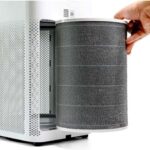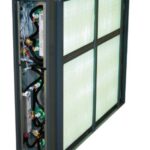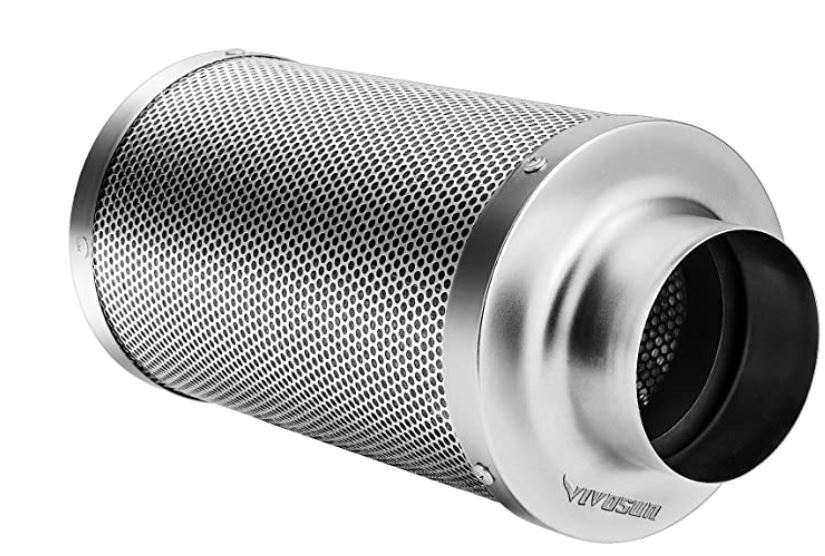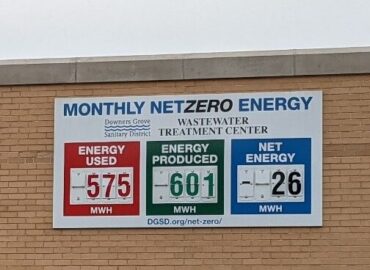Overview:
Chemical filters are a means of trapping gaseous air pollutants such as VOCs to improve indoor air quality. The best example of a chemical filter is an activated charcoal (carbon) filter, which captures contaminants through a process called adsorption. Another chemical filter is a photocatalytic oxidizer (PCO), which uses a UV light to activate a metal salt, which captures and oxidizes airborne contaminants. If the primary goal is to remove COVID-19 or other pathogens, these systems may be an option, though they are usually paired with other filtration systems, increasing their energy impact on ventilation and have high maintenance costs.


Carbon Filter Details
- Carbon filters are a passive means of chemical filtration that remove chemicals by a process of adsorption – chemical bonding or physical integration into the carbon granules.
- Carbon filters can be tuned to specific volatile organic compound (VOC) removal through addition of metal oxides or salts, or designed for wide-range removal.
- Carbon filters are used for pathogen removal in water and air systems.
- Carbon filters are not intended to filter particulates. They are usually paired with another filter to protect the carbon for its intended purpose, VOC removal.
- Read more here and here
PCO Filtration Details
- Active chemical removal through UV excitement of a chemical salt, usually titanium dioxide.
- Specific purpose is VOC removal, so units are paired with other filters for particulate removal.
- Pathogen inactivation has been shown for multiple pathogens, though only a small portion of total load in single-pass systems.
- Read more here and here.
Harmful Byproducts: Carbon filters have no harmful byproducts. PCO devices, if not properly manufactured, can release ozone from the UV lamps. Most UV lamps have a coating that prevents the release of light in wavelengths that can create ozone, so caution must be used when purchasing systems to verify UV lamp quality. Also, the partial oxidation of VOCs by the PCO can result in the release of new varieties of VOCs from the device. Careful design of the airflow velocity is required, as well as knowledge of known VOC contaminants, is needed to properly design a PCO for safe VOC elimination.
Added Energy: Carbon filters do not add energy to an existing system. However, since the filters are usually paired with a standard filter for particulate removal, pressure drop can be high, increasing fan energy in an HVAC system. Carbon-impregnated filters can mitigate this pressure drop by combining the adsorption effects of activated carbon with particulate filtration, but the amount of carbon is small in these types of filters, requiring replacement every few weeks to maintain VOC removal. Typical carbon filters hold multiple pounds of carbon granules, and are very deep, so pressure drop is very high. This greatly increases the fan energy required in an air conditioning system, as much as 3-5HP.
PCO devices have intrinsic energy use for the UV lamp and increased pressure drop from the metal salt mesh inline with any existing particulate filters. However, the metal salt mesh is thinner than comparable carbon filters, so the pressure drop is less for this type of system, equivalent to a couple horsepower in fan energy overall.
Install Cost: Carbon filters are usually added to buildings as either stand-alone in-room air purifiers or require significant modification of existing air handling equipment to provide the space for the carbon filter and replace fans which will likely need to be up-sized to handle the additional pressure drop. Stand-alone units are much more common for classroom applications and will cost a $200-$750 dollars per unit. Remember that the carbon content in these units is usually small, though, so frequent replacement of the carbon filters is necessary to maintain VOC removal, at between $75-$300 per filter.
PCO systems cost a $1,000 to $2,100 per unit for residential applications to purchase and install, so school-sized systems for central air handlers likely cost in the $10,000 range or more. In-room air cleaners are likely to be on-par with residential system costs, somewhere between $350-$1,400 per unit. As the titanium dioxide needs replacement for these units, expect around $200 per filter replacement.
Beyond the Pandemic: While chemical filters such as carbon and PCO filtration can be designed to capture an inactivate viral particles, they need to be specifically designed for this purpose to ensure performance. Commonly available commercial units are not likely to achieve these levels of design and should be carefully considered before application to a facility. The main benefit of these types of units is VOC and odor control. While source control is one of the best methods for controlling indoor gaseous pollutants, VOCs will always be present and research is on-going into their long-term impacts to human health; in general effects include nose, eye, and throat irritation, dizziness, headaches, skin rashes, and increase chronic health risks. Chemical filters can help to reduce these impacts and improve overall indoor air quality. As noted above, activated charcoal filters are a proven technology for providing additional air cleaning. PCO systems, if selected, should be carefully reviewed for performance at the design conditions they will operate under to limit the production of harmful byproducts. Factors such as humidity, particulate load, and incident VOCs can impact the operation of a PCO unit. We strongly recommend working with a qualified engineer to select proper designs.






